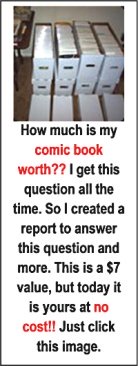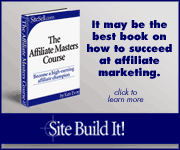Action Figures, How the Heck
are They Produced Anyway?
Action figures, like any other production line product, have certain steps or processes, which need completion, before they end up on the toy shelves. Have you ever wondered how your valuable little gems came to be? I will attempt to cover the basic manufacturing process and philosophy. This is just a general overview and a certain given action figure may vary from these procedures, depending on the requirements and goals that need to be met.
Some of these steps appear a little more familiar to me than maybe most. In another life (ha ha), I was a mold engineer for a while. And most action figures are manufactured in some kind of molding process. So grab a favorite beverage, sit back and absorb the creation process of your favorite collectibles.
Behold, A superhero Creation!
Step One: The Concept - It all starts here. The brainstorming method in action. Here the character is decided on and what that character will do. Or what kind of action will it perform. A rough sketch of the superhero's look and feel is usually generated.
Step Two: Turnarounds - At this point, the concept is handed over to an artist to provide what are known as turnarounds. These are multiple views of the action-figures, which show them from most angles. This allows the license holder an easy way to handle approvals. It also gives the sculptor a good idea of what the final product should look like.
Step Three: Request For Quotation (RFQ) - Ah, the RFQ, how many times have I heard this term. Once given the go ahead, the accounting team provides the turnarounds and figure requirements to the manufacturing team (usually located in China). The RFQ basically gives the manufacturing staff the project details that need to go to various factories to get price quotes on how much the final item will cost to manufacture per unit.
Step Four: Model Sculpting - At this point if the project will involve any type of "injection molding" or requires that a tool be made, you will need to have a sculptor create a "model" to pattern the tool from. The model maker will usually produce a static model for approval along with a "paint master".
The paint master is representative of how the action figures will look once they have been manufactured and the decoration applied. This is what the factory will use as a guide during production and will be compared against for quality assurance.
Step Five: Vendor Selection - Once all approvals have been obtained on concept and prototype sculpting, the manufacturing group is in a position to select a vendor to manufacture the new figure. This vendor will be chosen based on cost per unit, delivery time and past vendor quality. Manufacturing will also provide a timeline that will list all of the areas involved in manufacturing the project.
Step Six: Engineering Drawings/QA Plan -Engineering drawings that show how the item works and/or is constructed may be needed by the testing lab that you are going to work with. Either in-house engineers or manufacturing vendor's engineers will supply these drawings.
It is the responsibility of the testing lab to evaluate the designs of the action figures to verify they meet the requirements needed for safety. They will then create a Quality Assurance Plan (QAP) that will be provided to the manufacturing facility to follow during production.
Step Seven: Sculpts Provided to Manufacturing Vendor - The approved and completed sculpts or models of the action figures are now provided to the manufacturing facility. At this point, the facility or factory makes a duplicate model called a "looks like" model and also a "works like" model. These models will show what the new product line is to look like and how they are to function as end item figures. This phase also irons out any remaining design/communication issues.
Step Eight: Carton/Packaging Requirements -It is now time to define the information the client will require on the master cartons. This information is required early in the production process due to the lead-time to produce the master cartons. Typically, each client has certain specific information about the product and stocking codes that they want printed on their master cartons.
All packaging copy, manuals, decals, bagging and legal info (country of origin, copyrights, logos, etc) needed for final packaging are also defined. All of this is critical as once the hard tooling is machined, which creates the packaging, it is costly to change.
Step Nine: Review of Prototype Models - Once models are ready from the factory, they are reviewed and given final approval or changes defined as necessary. Once approved, the factory can start machining all hard tooling (molds, etc) needed.
Step Ten: Review of Vendor's Manufacturing Process Documentation - Review of all processing paper work insures the factory understands exactly what it is they are producing and that all action figures will work as envisioned and designed.
And to review the final steps in the manufacturing process, just continue to the next page using the link at the bottom of this page.
Final Thoughts

Action-figures collecting has become quite an active and enjoyable hobby over the last 30 years or so. If you are just getting started in your action figure fascination or have your own collection started, then you may want to check out this action figures blog. Kastor has compiled this info just for you!
If you want to keep up on the varied and interesting activities going on in the world of comic books, then feel free to sign up for my newsletter "Comics Galore" in the form below. And by all means, I would love to hear your comments and opinions on superhero action figures. You can sure leave them for me at my contact page in the menu at the left. I may even be able to include them in my newsletter. I thank you ahead of time.
Dave Gieber
The final steps of the action figures manufacturing process!









New! Comments
Have your say about what you just read! Leave me a comment in the box below.